'I've got five babies in the car': Inside the fight to get on affordable housing waitlists
Every day, Cecilia Arvizo would tell her five young children the same thing.
“We’re camping,” she would say.
In reality, it was the summer of 2020, and the family had recently been evicted from their home in Glendale, Arizona. They spent each night piled in the back of Arvizo’s Chevy Equinox, sleeping in parking lots around the city and bathing in a QuikTrip gas station bathroom while she struggled to find affordable housing.
After more than a year of putting her children to bed in the back of her SUV, Arvizo finally got a stroke of good fortune: Glendale was opening the waitlist lottery for its affordable housing voucher program. She applied immediately. She couldn’t wait to move.
“I thought it was mine for sure,” she said.
What she didn’t realize is that across the country, thousands of other desperate people had also applied, including a single woman from New Orleans, more than 750 households from Illinois, and a family of five from Anchorage, Alaska.
A few weeks later, while sitting in the driver’s seat of her car, Arvizo received an email from Glendale’s Housing Authority.
“Unfortunately, your pre-application was not selected to populate the waiting list,” the email said.
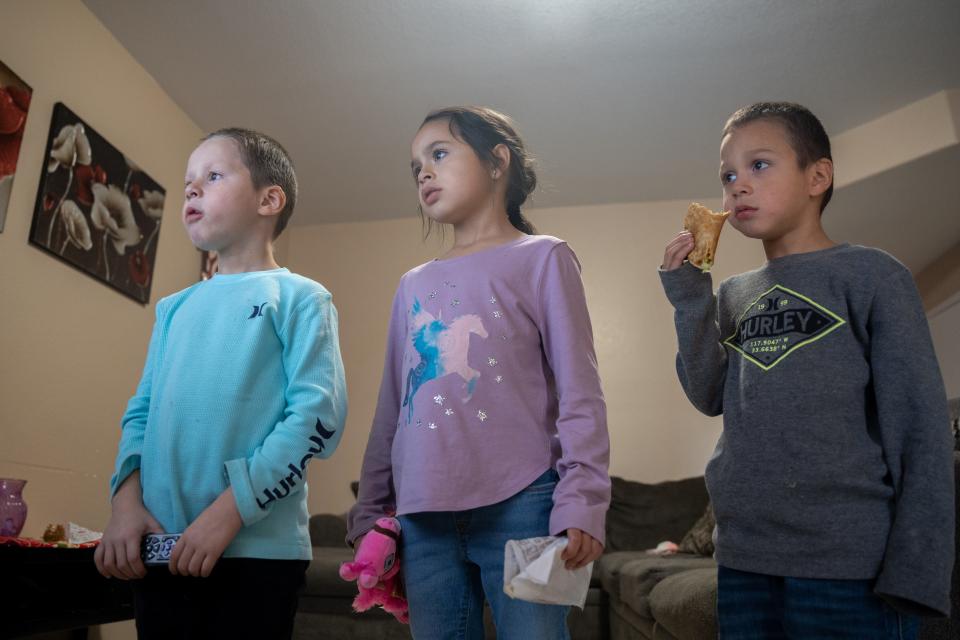
Because affordable housing is rapidly disappearing throughout the U.S., many people are increasingly willing – or even needing – to move for it. The scarcity has led to a nationwide phenomenon called “waitlist shopping,” where poor families scour the internet for open affordable housing waitlists, effectively playing a game of geography roulette as they try to secure subsidized housing far from home.
The trend is a symptom of America’s deepening housing crisis. The country has only 36 affordable and available rental homes for every 100 extremely low-income renter households, according to the National Low-Income Housing Coalition. Public housing programs have long been subject to disinvestment, causing cities to lose guaranteed affordable housing stock. Local housing authorities often have yearslong waits for their affordable housing programs or have stopped taking applications indefinitely.
Even if people get a housing voucher, there’s a good chance they won’t be able to use it. The vouchers can only be used for rental units under a certain price limit, and there are far too few of them available. On top of that, many landlords won’t accept vouchers because of the stigma associated with voucher users and the administrative burden of vouchers.
Crisis unfolding: The US housing shortage is 'awful' and will likely get worse with no apparent end in sight
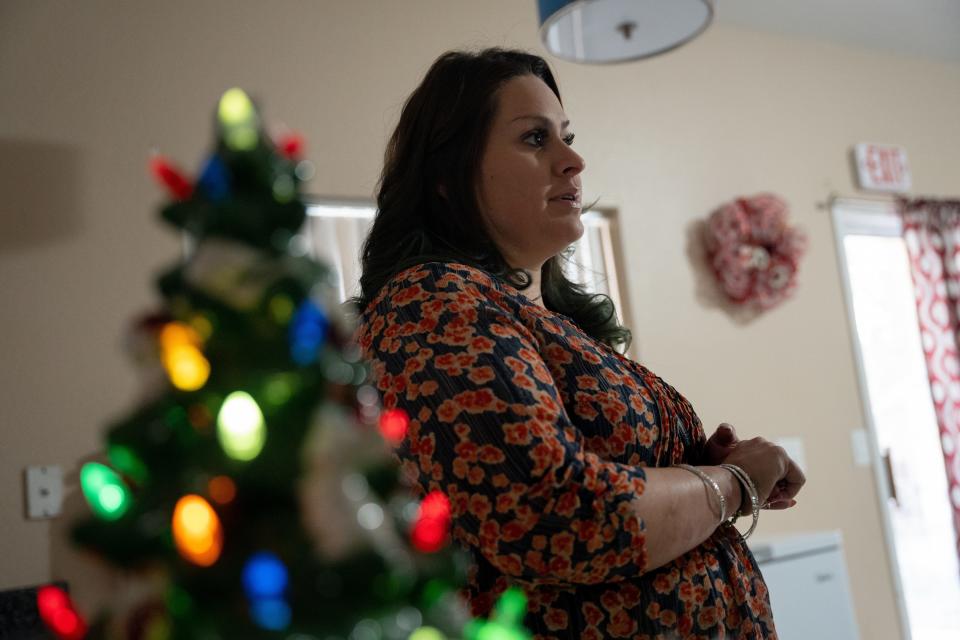
The problem, experts said, is that there’s a severe and widespread shortage of affordable housing – not that people are applying to affordable housing programs outside of their own city. Rather than leave a huge number of poor families to compete for limited resources, they said, the federal government needs to invest more in housing vouchers and other solutions to the housing crisis.
After opening Glendale’s rejection email, Arvizo said, she stared at her phone and felt the world slow down.
She put her head on the steering wheel and turned to look at her kids sleeping side-by-side in the back. At first, she thought it must be a mistake. Then, she felt angry.
“I’ve got five babies in the car with me, and you’re telling me I didn't make it in the lottery,” she remembered thinking in disbelief. “What did you guys do?”
‘Why did we let it get this bad for so many people?’
Glendale opened the waitlist for its housing choice voucher program in July 2021. Over just three weeks, applications flooded in from almost every corner of the country.
The city of a quarter-million people received more than 11,000 applications for just 350 waitlist openings, according to data from Glendale’s housing authority. Candidates from 48 states, Washington, D.C., and Puerto Rico were vying for spots.
Their odds of getting on the waitlist were worse than Harvard’s acceptance rate.
The housing choice voucher program, formerly known as Section 8, is a federal program that enables very low-income households to afford private market rental housing. Tenants pay 30% of their income for rent, and the voucher covers the remainder of the cost. The program is funded almost entirely by the U.S. Department of Housing and Urban Development, or HUD.
Waitlists are necessary because housing authorities almost always have far more applicants than they are able to help.
HUD allows people to apply to as many housing waitlists as they want, wherever they desire, which gives people choices and a shot at a better life. It also may help address racial segregation, as discrimination has historically limited housing options for Black people and other people of color.
Like many other places, Glendale handles the deluge of applications with a lottery, meaning that every application – be it from a family in Alaska or one down the street – has an equal chance of getting picked.
While most of the families that were randomly selected for Glendale’s voucher waitlist were from Arizona, a quarter came from other states, and less than 20% were already living in Glendale. Waitlist spots were snapped up by people from all over the country, like a family of four from Colorado Springs, Colorado; a single woman from Oakland, California; and more than a dozen households from Chicago.
It’s not just Glendale. Cities and towns across the country attract waitlist applicants from far and wide, although numbers vary widely.
Dubuque, Iowa, opens its waitlist for a 24-hour period each month. Of the nearly 300 applications it received in November, just over half were from outside of Iowa, according to a city official.
Of the 15,000 people on the waitlist in the Cleveland area, approximately 700 applied from out of state, a Cuyahoga County, Ohio, official said in an email.
And more than 10% of the roughly 188,000 households that applied to Los Angeles’ waitlist in 2017 were not from Los Angeles County, said Matthew Fowle, a postdoctoral fellow with the Housing Initiative at the University of Pennsylvania who is working on a project alongside the city’s housing authority.
Waitlist shopping is also occurring elsewhere in Arizona. When Maricopa County and Chandler opened their waitlists in 2020, about a quarter of the applications for each waitlist came from outside of Arizona, according to managers of those programs.
Several people told The Arizona Republic, a member of the USA TODAY Network, they moved across state lines for a housing voucher. Though moving can be financially draining, it was their only shot at having an affordable place to live. All of them had first tried to get a voucher in their own cities or towns but couldn’t.
In January 2022, Carleone Moore received an unexpected email: He had been chosen for the voucher waitlist in El Paso, Texas.
Moore, who is disabled and was living in Las Vegas at the time, had totally forgotten he had applied to the El Paso waitlist. After being rejected from the Las Vegas waitlist the year before, he was living in a hotel room and keeping his belongings in storage.
So when El Paso came knocking, he answered. Within a few months, he took out a $5,000 loan to cover moving costs and relocated more than 700 miles away.
The move hasn’t been easy so far. His new neighborhood doesn’t have much public transportation, and there were some problems with his apartment. But he’s hoping he can make it work, he said. He can’t afford another big move.
“I believe in the end, it will be worth it,” he said.
Angie Rivera moved from New York to Texas in April, she said, after being on the New York City waitlist for almost 16 years. As a single parent of two teenagers, she was barely able to afford New York City rent, even while working three jobs. She worried she and her family would end up homeless.
Skylar Dakota Myson said she moved from Illinois to Iowa for a voucher in 2007. She couldn’t afford to pay rent for herself and her children without it. After a year, she transferred her voucher back to Illinois through a process called “porting,” which allows people to use a voucher they receive in one place elsewhere.
Little – if any – comprehensive research has been done on people moving for vouchers, so it’s impossible to know just how common the practice has become.
Many people learn about open waitlists online. A handful of websites, such as affordablehousingonline.com, track waitlists throughout the country and alert subscribers to new openings, while Facebook groups serve as a forum for prospective and current voucher holders to trade tips on how and where to secure one. Waitlist shopping is common for public housing programs, too.
Jay Reulet, an independent affordable housing consultant based in Texas, said he’s seen an uptick in people applying for housing vouchers far and wide since the COVID-19 pandemic.
“People are going to any city where they feel like they can get a voucher, at this point,” he said.
That fact is proof the system isn’t working efficiently, said Andrew Greenlee, an associate professor of urban and regional planning at the University of Illinois Urbana-Champaign.
“There’s a broader social question here,” Greenlee said. “Why did we let it get this bad for so many people?”
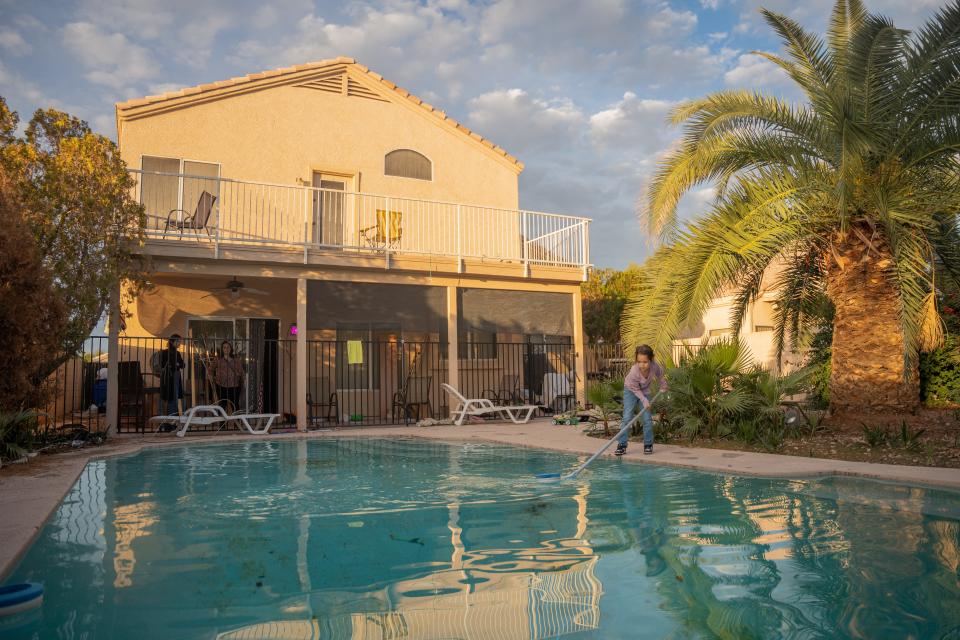
‘An impossible moral quandary’: How to choose who gets housing
Some people, like Arvizo, believe locals should be offered housing assistance first.
In early 2020, Arvizo had a home in Glendale and a stable job selling insurance. But she fell behind on rent. She received an eviction notice in early March, just a few weeks before the national eviction moratorium took effect.
“If it's out of Glendale, it should be Glendale residents, Glendale workers first,” Arvizo said of the housing vouchers.
If a housing authority did want to ensure local residents were prioritized, there’s one avenue it could take: stop using a lottery to compile its waitlists.
While HUD does not allow housing authorities to limit their applicant pool to current residents, it does allow them to prioritize local residents and certain other groups – like veterans, senior citizens and people experiencing homelessness – once they are on the waitlist. People are assigned points based on those statuses and are placed higher on the waitlist if they have more points, meaning they receive a voucher more quickly.
But before that can happen, they must first get on the waitlist, which Glendale and many other housing authorities choose to generate by a random lottery.
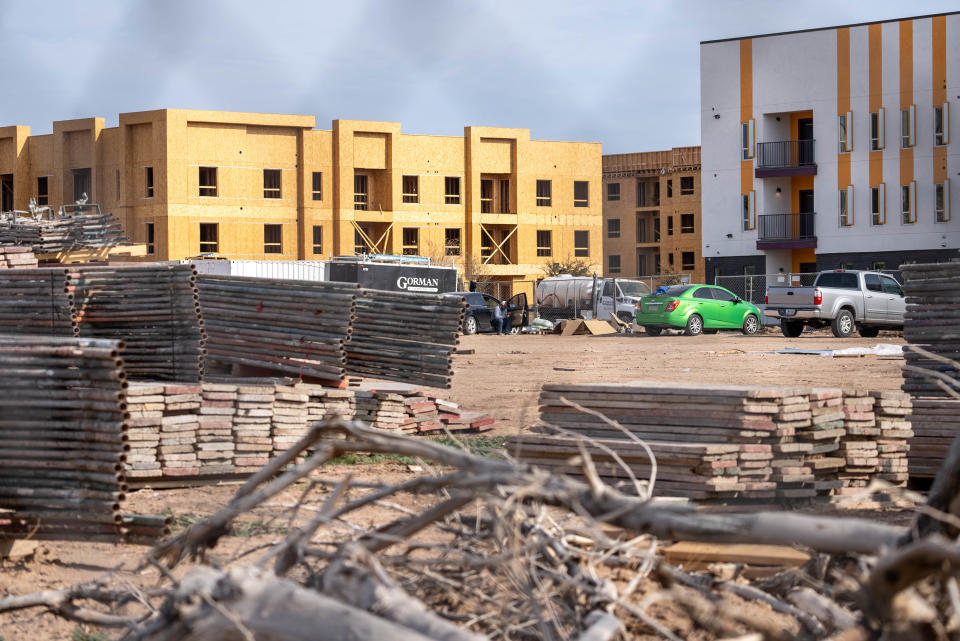
Using a lottery was necessary to keep the wait time for Glendale’s housing programs reasonable, said Jean Moreno, Glendale’s community services director.
There are some places where demand is low, so the waitlist moves quickly. But Glendale isn’t one of them. If all 11,000 of Glendale’s applicants were put on the waitlist, rather than using the lottery system, it could result in a decadeslong wait time.
Even with just 350 people on the current waitlist, it could still take the city two or three years to get through everyone, Moreno said.
If a family doesn’t make the waitlist, it likely will be years before they get another chance. Before reopening in 2021, the last time Glendale opened its waitlist was in 2016.
Moreno said there is a “critical need” for more affordable units in Glendale, especially for low- or extremely low-income households.
“Without these programs, people might otherwise have to choose between putting food on the table and paying rent,” she said.
As of March, there were still more than 200 families on the waitlist Glendale assembled in 2021, Moreno said. Two out-of-state applicants had been issued vouchers so far.
Experts disagreed on whether housing authorities should continue to use lotteries to choose their waitlists.
Lotteries are “the lazy way out” and prevent the neediest people from getting help, said Kirk McClure, an affordable housing expert and professor emeritus at the University of Kansas.
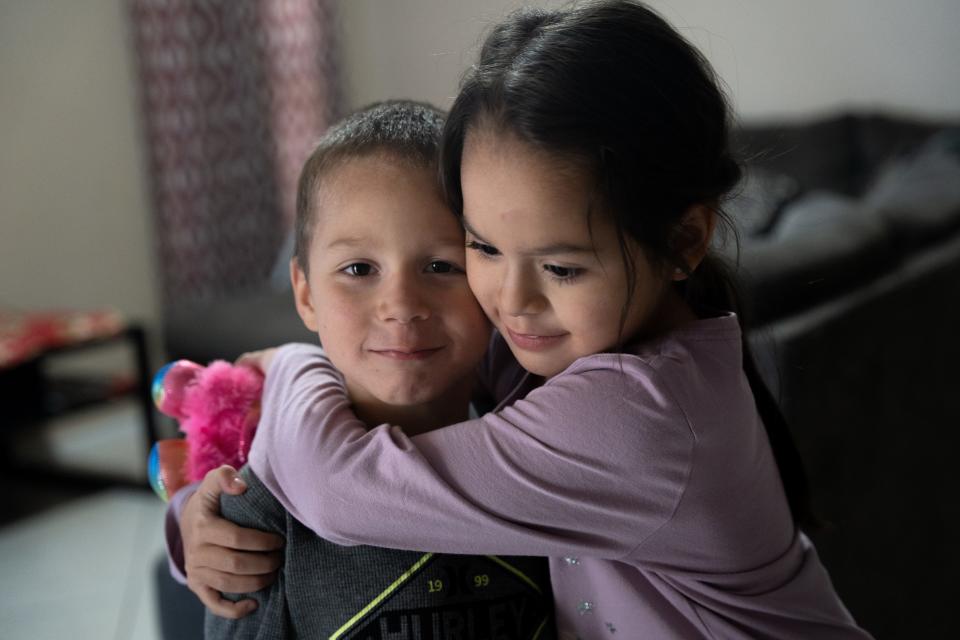
“I’m hard-pressed to believe a woman with six kids who is homeless can’t be the highest preference person,” he said, referring to Arvizo, who had her sixth child in October. “And that’s why I don't believe in these lotteries.”
Others said housing authorities are inundated with an unreasonable amount of work.
“I think the housing authorities are doing the best they can in an impossible situation,” said Susan Popkin, a public housing policy expert at the Urban Institute, an economic and social policy think tank.
Not using a lottery isn’t a perfect solution. San Diego County does not use a lottery and instead puts every applicant on its waitlist, then selects households by when they applied and the priority points they're assigned. At the end of 2020, it had 56,737 families on its waitlist, according to its 2021 annual plan. People who eventually received a voucher waited an average of 12 years.
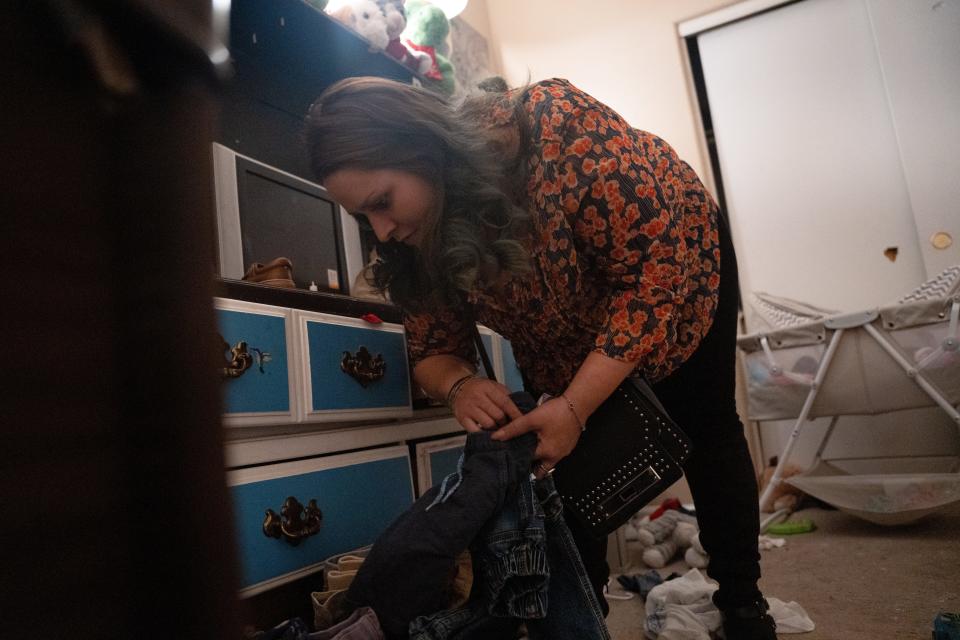
When it comes down to it, deciding how to prioritize who gets onto the waitlist and how is a conundrum because so many people are so desperately in need, said Eva Rosen, an associate professor at Georgetown University and author of a book on the housing choice voucher program.
“It’s an impossible moral quandary,” Rosen said.
Nationwide, there are enough housing vouchers to assist only about 1 in 4 families who qualify, according to the Department of Housing and Urban Development.
Because there are far fewer vouchers than households who need them, the shortage creates a “zero-sum” mentality that unfairly pits voucher seekers against one another, said Philip Garboden, an affordable housing professor at the University of Hawaii.
“I think it’s important to remind everybody, the main culprit here is the shortage” of vouchers, Garboden said.
Carl Gershenson, a project director at Princeton University’s Eviction Lab, agreed.
“It’s so unfortunate that this program is designed in a way that’s making people feel like they’re competitors and rivals with other people who need help,” he said. “It’s tragic.”
Are universal vouchers a viable solution?
The Republic asked nine affordable housing experts what can be done to address the housing voucher scarcity. They all agreed: Fund more vouchers and other affordable housing programs.
Many of the experts advocated for making the housing choice voucher program universal, which would allow anyone who qualifies for a voucher to receive one.
Such a change would be expensive but attainable, they said. The Urban Institute estimated in 2020 that a universal voucher program would cost around $62 billion per year and would help an additional 19.7 million people.
“That number is the petty cash drawer of the Defense Department,” McClure said. “We can do this. We just lack the political will in the United States to help the poor.”
The price tag is less money than the revenue lost from the home mortgage interest deduction, a federal tax incentive that allows homeowners to subtract mortgage interest from their taxable income. According to 2013 research from the Center on Budget and Policy Priorities, a public policy think tank, that program costs more than $70 billion annually.
“Most of our housing policy is technically directed at homeowners,” Fowle said. “Which, from an equity perspective, doesn’t make sense.”
In some countries, such as France, the United Kingdom and Finland, housing assistance programs are available to anyone who qualifies, similar to Medicare or food stamps in the United States.
The main obstacle to implementing universal housing vouchers in America? Politics, experts said.
In 2020, President Joe Biden campaigned on a pledge to make housing vouchers universal. If implemented, the policy would have reduced poverty by 23% nationwide, researchers at Columbia University’s Center on Poverty and Social Policy estimated.
An early version of the Build Back Better plan, which Biden announced in October 2021, would have been a start: The sweeping public investment strategy would have allocated $22 billion to expand the housing choice voucher program, $65 billion to invest in public housing and more.
But after the plan passed in the House, Democratic Sen. Joe Manchin of West Virginia pulled his support, citing concerns about inflation, increasing the national debt and needing to fight COVID-19. The plan was ultimately watered down into the Inflation Reduction Act of 2022, which didn’t include the original plan’s proposed affordable housing investments.
Because the nation has a shortage of affordable housing units, a universal voucher program would need to be accompanied by building more affordable homes where people can use the vouchers, experts said.

In the meantime, millions of low-income families continue to struggle.
It’s been more than a year and a half since Arvizo applied to Glendale’s lottery, and she and her children still don’t have a permanent place to call their own. The family moved into a home in Phoenix in November 2021 but was evicted in June 2022, just a few months before Arvizo gave birth to her youngest child. They were soon bouncing from budget motel to budget motel. These days, they are temporarily staying in a house managed by a nonprofit until Arvizo can find work.
Despite the time that has passed, Arvizo is still in disbelief that she couldn’t get a voucher. She constantly worries about not being able to keep a roof over her children’s heads – about whether she’s failing them.
“They are our future. These kids need to be somewhere stable,” she said.
When Mesa opened its housing waitlists in the summer of 2022, Arvizo briefly considered applying. She decided against it.
After all, the odds were stacked against her.
Juliette Rihl covers housing insecurity and homelessness for The Arizona Republic. She can be reached at jrihl@arizonarepublic.com or on Twitter @julietterihl.
Coverage of housing insecurity on azcentral.com and in The Arizona Republic is supported by a grant from the Arizona Community Foundation.
This article originally appeared on USA TODAY NETWORK: Affordable housing 'waitlist shoppers' across US vying for vouchers

